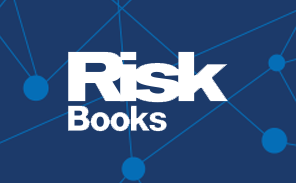Credit risk model management
View AgendaKey reasons to attend
- Learn how to build and maintain a framework to validate credit risk portfolio models
- Understand the impact of Basel 3.1 amendments
- Approach the guidelines and implications of artificial intelligence (AI) in credit risk modelling
Customised Solutions
Does your team require a tailored learning solution on this or any other topic?
Working with the portfolio of expert tutors and Risk.net’s editorial team, we can develop and deliver a customised learning to make the most impact for your team, from initial assessment to final review.
About the course
Join Risk Learning and faculty members for this interactive and technical learning event examining best practice for credit risk model management.
Participants will learn how to validate credit risk models and stress-test credit risk portfolios. This course will examine developments in credit risk such as the impact of Basel 3.1 amendments, expected economic trends in 2024 and mitigating uncertainty.
The AI and machine learning application in credit risk modelling session will focus on utilising smaller datasets and participants will learn best practice techniques in model risk validation and stress-testing.
Pricing options:
- Early-bird rate: save up to $800 per person by booking in advance (refer to the booking section for the deadline)
- 3-for-2 rate: save over $2,000 by booking a group of three attendees (applicable to this course)
- Subscriber reward: save 30% off the standard rate if you are a Risk.net subscriber (use code SUB30)
- Season tickets: save over $1,000 per person by booking 10 or more tickets (available on selection of courses)
*The 30% subscriber reward discount is applicable only to current Risk.net subscribers. If this criteria is not met, we reserve the right to cancel the booking and issue an invoice for the correct rate. Discounts cannot be applied to already registered participants.
Learning objectives
- Evaluate model risk management and governance through different frameworks
- Address the developments for credit risk modelling by adjusting to new regulations
- Identify credit risk modelling in post-International Financial Reporting Standard 9 with Basel 3.1 amendments
- Conduct impactful general principles of model design in stress-testing
- Implement AI and machine learning using smaller datasets
- Conduct the integration of climate risk on the probability-of-default model curve
Who should attend
Employees whose job responsibilities may include but are not limited to:
- Credit risk
- Risk modelling
- Risk management
- Model risk management
- Climate risk
- Stress-testing
- Machine learning
Agenda
July 16–18, 2024
Live online. Timezones: Emea/Americas
Sessions:
- Credit risk model validation
- Developments for credit risk modelling
- Credit risk modelling post-IFRS 9
- Stress-testing credit risk portfolios
- Application of artificial intelligence (AI) and machine learning in credit risk modelling
- Integrating climate and credit risk
Accreditation
This course is CPD (Continued Professional Development) accredited. One credit is awarded for every hour of learning at the event.
Pre-reading materials
The Risk.net resources below have been selected to enhance your learning experience:
- Energy credit risk benefits from next-generation technology - Read article | Risk.net
- The impact of treasury operations and off-balance-sheet credit business on commercial bank credit risk - Read article | Risk.net
- Credit Risk Modelling - Read article | Risk.net
To access some of the above articles you need to have a current subscription to Risk.net. If you don’t have one now, please subscribe to a free trial



